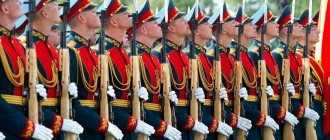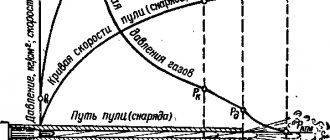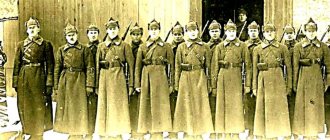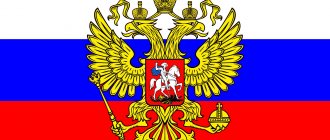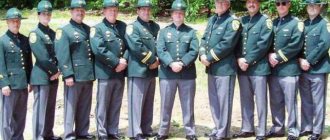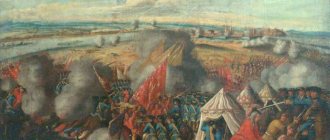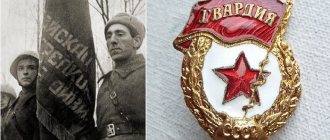The fate of the regiments after the 1917 revolution
In 1917, the Semenovsky Regiment was renamed the 3rd Petrograd City Guard named after Uritsky Regiment and stood on the side of the Soviet regime, but during the spring offensive on Petrograd, some of the officers went over to the side of the White Guards. As a result, at the beginning of 1918, the regiment was abolished, and later, in 1925, some participants were arrested by the Soviet authorities and shot.
The disbandment also affected the Preobrazhensky Regiment - in 1918, the Soviet government quartered the regiment's officers because of their participation in the February Revolution on the side of the rebels. Some time later, the regiment was recreated in the ranks of the White Army in the south of the country, but was small in number. Officers in the Preobrazhensky Company participated in the Civil War, but by the beginning of 1930, most of the officers who had once served in the Preobrazhensky Regiment were already in exile.
So by the beginning of the 1920s, the former imperial Semenovsky and Preobrazhensky regiments ceased to exist.
“Made with us” and on Yandex.Zen
The minister had already heard enough about today's guest.
Not so much even from the press, where his name did not leave the front pages (journalists made of him a kind of cross between Captain Nemo and the Count of Monte Cristo), but from equally high-ranking friends. And yet this Yaroslavichev remained a highly mysterious person. Moreover, despite the fact that every single review was positive (to say the least), it still aroused serious wariness in the owner of the office. To be frank, when the secretariat informed him that the reception had received a request from the Rurik Foundation with a request to organize a meeting between the minister and the president of the Foundation, Sergei Petrovich had a great desire to stall for time in the hope that everything would resolve somehow by itself. But he was too experienced an official not to understand that this desire of his belonged, alas, to the category of impossible. Not the same level. And this was confirmed literally on the same day. By the evening, the director of the FSB called him, the relationship with whom was more of a friendly official than friendly (and who, I wonder, had friendly relations with this little owl), and asked him to treat the needs of the private charitable organization “Rurik Foundation” with all possible attention . Whoever organized this call, there was no way not to respond to such an appeal. Not to mention the applicant's own status, the entire top brass was aware of the special relationship between the director of the Federal Security Service and the president of the country. So all that remained was to comply and organize a meeting, and in the very near future. However, everyone with whom he spoke called today’s guest a “sweet young man” or a “nice guy” who, however, “might surprise,” so it is possible that the minister’s fears were unfounded.The minister met the guest at the very door:
- Dmitry Ivanovich... very, very happy. Please...” The owner of the office, with a broad gesture, pointed to a seating area arranged on a separate carpet with a chic Belgian leather set consisting of a sofa, two hippo-shaped armchairs and a coffee table with a glass top and twisted wooden legs. - Tea coffee?
The guest nodded gratefully:
“Thank you, tea is better,” and after a short pause: “Boris Petrovich told me that you treat some guests to some very special tea, with juniper, so I’ve been tormented by anticipation for a week now.”
The owner of the office appreciated the joke and laughed roaringly. However, an attentive ear would have discerned such servile notes in his laughter. Because it wasn't just a matter of a good joke. Boris Petrovich was the head of the presidential administration and, like the director of the FSB, one of the president’s oldest friends, so this casually thrown phrase could be understood as a hint that the topic of the upcoming conversation had already been tested in the highest spheres and, as it were, already and approved.
Ten to fifteen minutes later, when the tea was safely drunk and the bowl of Berlin cookies was half filled, the minister put the cup aside and leaned back in his chair, turning an expectant look at his guest. He understood everything and also put the cup on the table.
- In general, I have two small requests for you, or, rather, even proposals. - Yaroslavichev paused for a moment, as if checking whether the minister was listening to him with due attention, which was immediately confirmed by a nod of the ministerial head, and continued: - The first is that, if the military leadership of the country so desires, the Rurik Foundation ready to take a direct part in the restoration of the old guard regiments in the Russian Armed Forces. I mean the regiments that will be named: “Preobrazhensky”, “Semyonovsky”, “Izmailovsky”, “Cavalry Guard” and so on. - Yaroslavichev fell silent. The minister also sat silently for a while, apparently considering the proposal, then carefully asked:
—What do you mean by direct participation?
- All.
- Could you specify?
- Whatever you consider necessary. We are ready to allocate money for the purchase of the most modern weapons, for the construction of all the necessary material and technical base - barracks, officers' houses, parks, warehouses for material and technical equipment and geesem, training campuses and training grounds - as well as for the purchase of automotive equipment, uniforms and etc. According to our calculations, the cost of equipping and equipping one regiment during the formation period, which is unlikely to take less than three to five years, will amount to about one to one and a half billion US dollars.
Hearing this figure, the minister almost shuddered, figures of this order were already comparable to the entire military budget of the country, and here... well, yes, this “might surprise you.” A tense silence reigned in the office. Finally the owner slowly asked:
- And how many regiments are you ready... to finance?
“We are ready to open a line of credit within the next month for the deployment of four to five units.
The minister sat silently for a minute, nodding his head as if talking to himself, then asked:
- Can you find out what caused such generosity?
The guest shrugged.
- There are many reasons. In particular, I am concerned about the current level of combat readiness and combat effectiveness of our armed forces (this sounded somehow presidential or maybe even royal, but the next words of the guest immediately freed the minister from this feeling). And since I have the opportunity not only to rant about this on the pages of newspapers, but also to really help, I decided to do it. It seems to me that the new “old guard regiments” will become something like experimental sites for testing new methods of combat training and field interaction, tactics for using new types of weapons, reconnaissance, communications and combat support, new acquisition systems and everything that will be necessary. That is, these will not be ceremonial units, so to speak, but purely combat units. Perhaps, like their ancestors, they were formed only from military personnel with long terms of service, that is, even the rank and file of these units will serve under a contract.
Revival of traditions
The Russian authorities gathered to restore the names of the famous Preobrazhensky and Semenovsky regiments on Victory Day.
The ranks of the Preobrazhensky and Semenovsky regiments will be assigned to the Moscow 154th Commandant Regiment and the 130th Separate Motorized Rifle Brigade, respectively.
Not only the historical symbols of Peter the Great’s favorite regiments will be restored (the emblem on the banner, breastplates, distinctive insignia on shoulder straps), but also the educational process of soldiers.
Such an initiative is expected to increase the soldiers' self-awareness as historical successors of the noble guards, and will also increase the status and attractiveness of military service for boys. In addition, it is planned that Preobrazhensky and Semyonovtsy who completed military service will teach patriotism lessons in schools.
If the renaming experience is successful, then in the future, perhaps, other military units will carry the banners of the famous Life Guards regiments.
The youth of the first emperor
The childhood of Tsarevich Peter cannot be called carefree and happy. When he was only 4 years old, his father, Tsar Alexei Mikhailovich Romanov, died. After his death, the enmity between two powerful families - the Naryshkins and the Miloslavskys - intensified. Peter's mother, Natalya Kirillovna, belonged to the first, Maria Ilyinichna Miloslavskaya was the first wife of the late tsar and the mother of his eldest son Fedor, who came to power.
Being in poor health, Fyodor Alekseevich Romanov reigned for a short time and died at the age of 20, leaving no heirs. To avoid unrest, two young brothers, Peter I and Ivan V, were crowned king at the same time, and their elder sister Sophia became their regent. Power was concentrated in her hands; the crowned boys were rulers only in name.
“Rabble” of Peter I
Probably, at first no one could have imagined that the Fun Troops would later become the elite of the Russian army. In the early years these regiments were treated with contempt. It is no secret that they recruited people who could not find a place for themselves in life, or representatives of the “lower classes.”
By the way, among these was Alexander Menshikov, Peter’s associate and faithful friend. Representatives of the nobility even believed that the Amusement Troops were a kind of “jesters” recruited into regiments to entertain the young sovereign.
Army of Peter I
It seems to me that such a contemptuous attitude had its reasons. At the early stage of their existence, the Amusing Regiments were indeed a kind of gathering of a motley public that could not be identified with a full-fledged army. But gradually the regiments really began to transform, turning into a real army.
In 1684, in the village of Preobrazhenskoye, where the Poteshnys stood, a real Presburg fortress was erected. It becomes the main object in teaching the art of assault and combat operations. And soon the soldiers from the Amusing Regiments also had artillery in their arsenal.
Paul Delaroche "Peter I in the uniform of an officer of the Preobrazhensky Regiment"
Amusing town of Presburg
In the fall of 1684, construction began on an amusing fortress for conducting maneuvers. For the construction of a military camp, a place was chosen on the banks of the Yauza, where the river makes a bow-shaped turn. Participated in the development of the plan:
- Fedor Sommer;
- Boris Golitsyn (“uncle” Peter);
- Peter Sheremetev Bolshoi;
- Tsar Peter I.
The fortress was built on the model of the forts of the outstanding French engineer Marquis de Vauban using foreign specialists. Excavation work and procurement of materials were carried out by local peasants. Peter and his amusing army also took an active part in the construction, which was completed only in 1689. Peter named the amusing town “the capital city of Presburg” in honor of the famous fortress of the Kingdom of Hungary, mentioned in a Russian treatise on military affairs from 1647.
The fortress was a rectangle with earthen walls on oak piles, surrounded by a log fence and a bypass ditch. Water to fill the ditch was supplied from the Yauza, the mouth of which was blocked by a dam. It was possible to enter the fortification through the front or rear gates with towers. An alarm bell was installed on one of them to sound the alarm in case of an attack. Drawbridges and drawbridges led to the gate.
Inside they built an octagonal three-story tower for housing, a turf tower with guns and a messenger cannon, a dining room, barns, sheds, a stable, and cellars. On the Yauza there was a funny fleet of boats, a plow and a shnyak, and later karbas were added to them. Every summer, Peter organized amusing maneuvers, the main action of which was the siege and assault of the capital town of Presburg.
